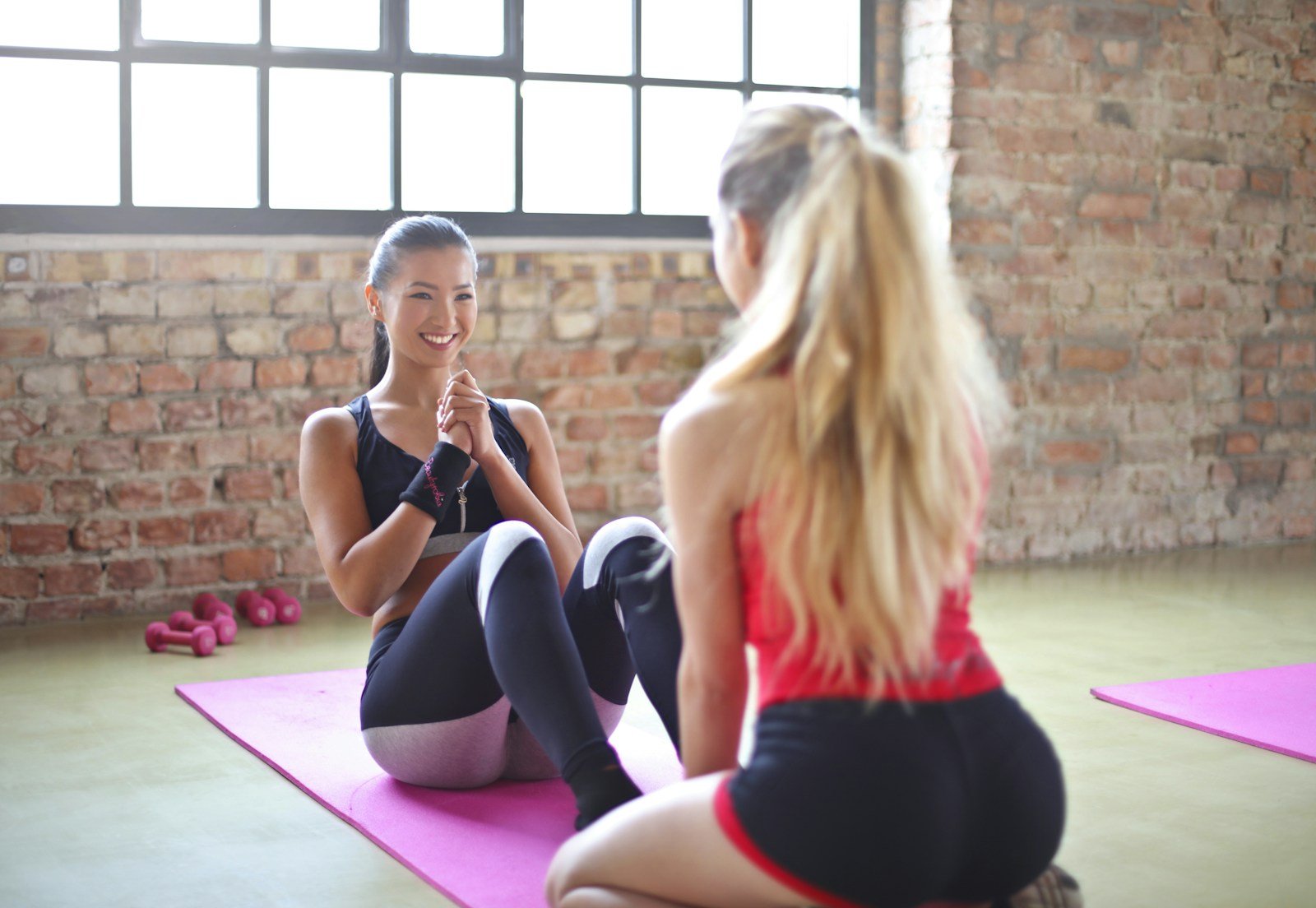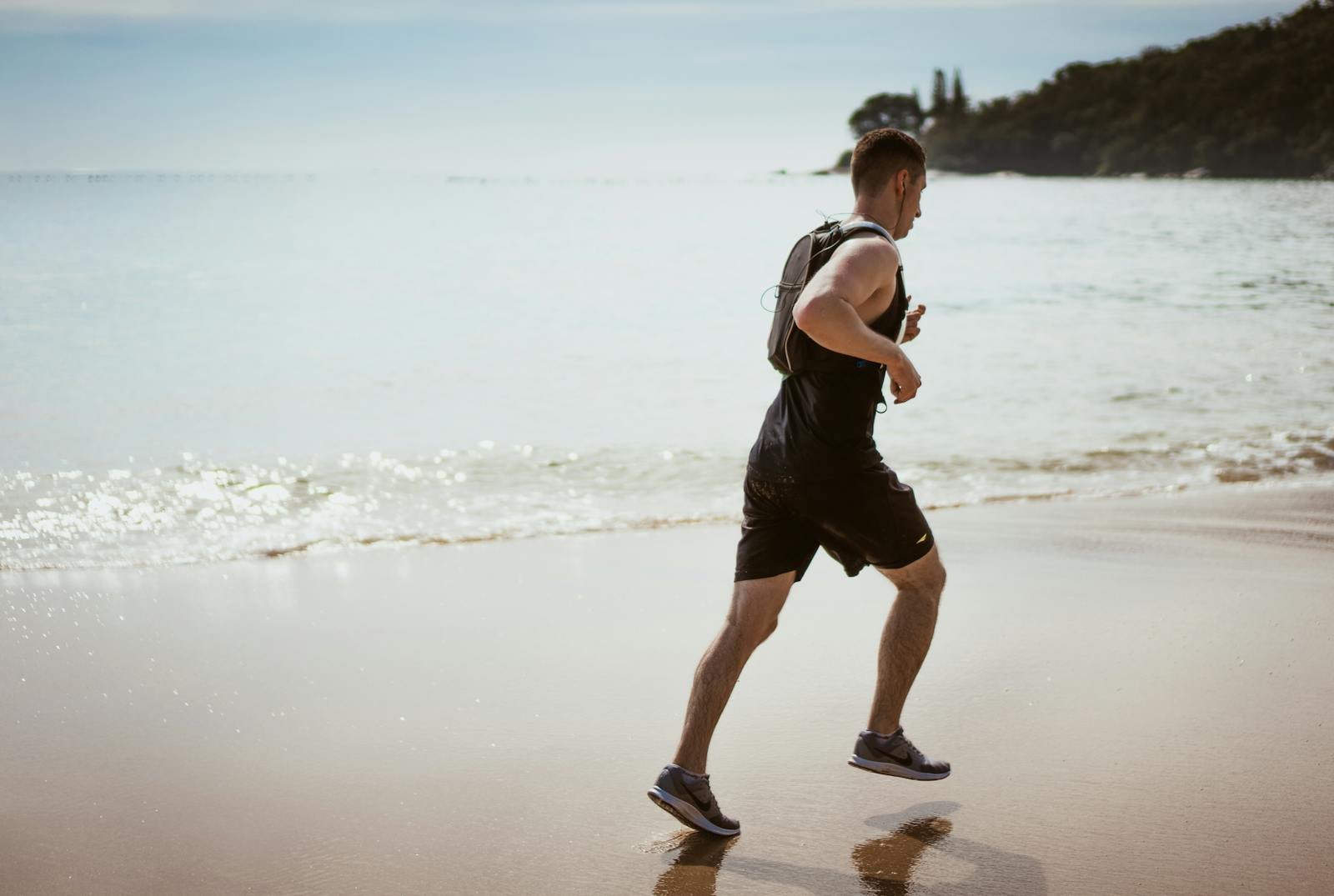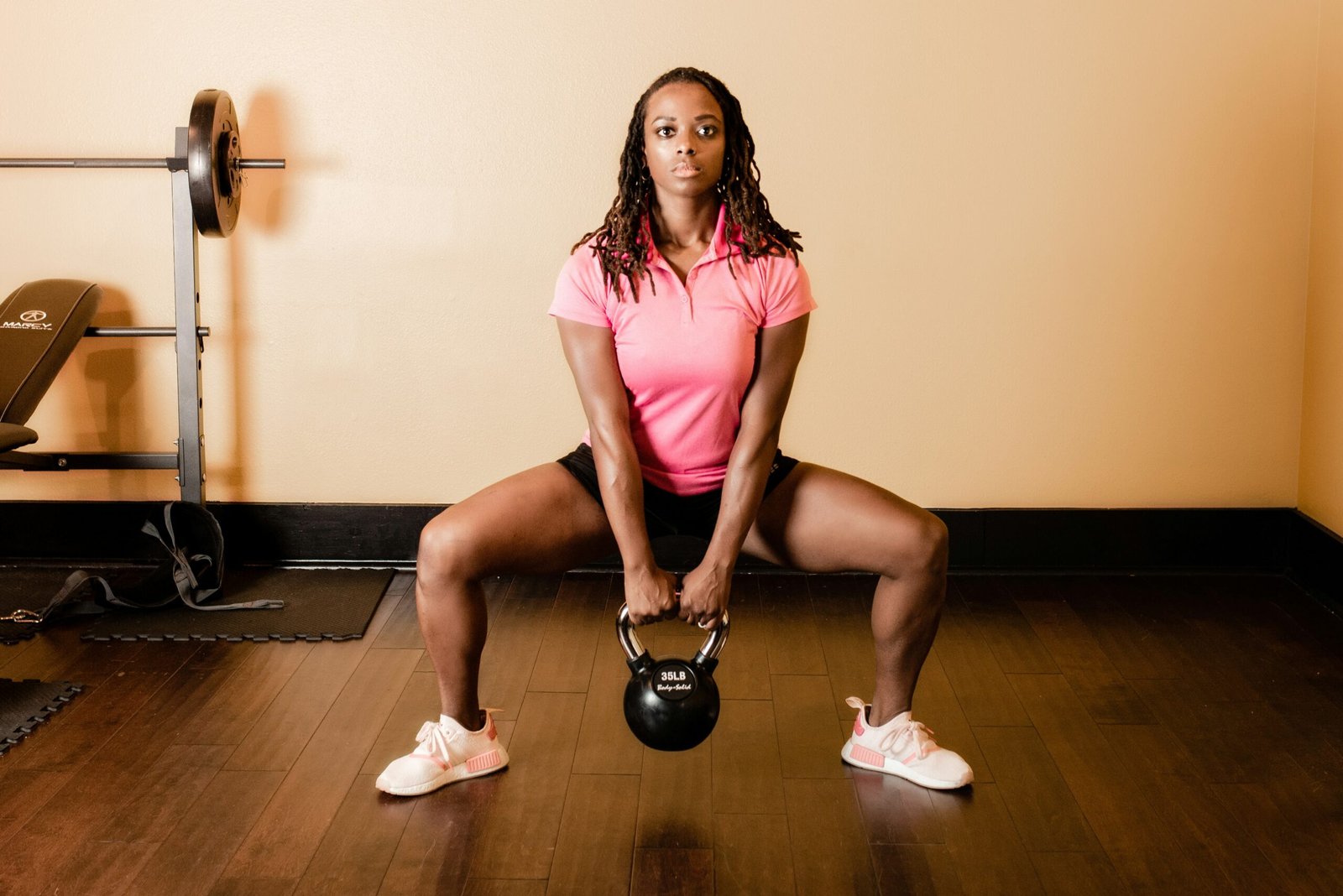Introduction to Partner Exercises
Engaging in exercises with a partner offers a multitude of benefits that can transform a standard workout into a more enriching experience. One of the primary advantages is the increased motivation that a workout partner provides. When exercising with someone else, an added layer of accountability often encourages individuals to maintain their routine and push their limits. This shared commitment can lead to more consistent and effective workouts. Furthermore, the social interaction inherent in partner exercises makes the process more enjoyable. Laughing, sharing experiences, and celebrating each other’s progress turn fitness activities into memorable moments.
Another significant benefit is the improvement in coordination and communication skills. Many partner exercises require synchronized movements and clear communication, fostering a deeper level of teamwork. This not only enhances the efficiency of the workout but also builds stronger interpersonal relationships. The diversified nature of partner workouts adds an element of variety to the routine, preventing monotony and keeping the participants engaged. Unlike solitary exercises, partner routines can introduce new challenges that keep the body and mind stimulated.
Moreover, partner exercises often involve compound movements that work multiple muscle groups simultaneously, ensuring a comprehensive full-body workout. This holistic approach not only enhances physical strength and flexibility but also improves overall fitness levels. By incorporating exercises with a partner into your fitness regime, you can transform your workouts into a supportive, dynamic, and collaborative experience that benefits both physical and mental well-being.
Warm-Up Exercises
Warming up is a crucial component of any workout routine, as it helps prepare the body for physical activity and reduces the risk of injury. Engaging in warm-ups increases blood flow to the muscles, enhances flexibility, and improves overall performance. When exercising with a partner, incorporating dynamic warm-ups can be both effective and enjoyable.
A tried-and-true warm-up exercise with a partner is the partner-assisted leg swing. To perform this, stand facing each other and hold onto your partner’s shoulders for support. Swing one leg forward and backward in a controlled manner, keeping the motion smooth and fluid. After several swings, switch legs and repeat. This exercise helps to loosen the hips and leg muscles, ensuring they are ready for more intensive movements.
Another effective and fun warm-up is the mirror stretch. In this activity, one partner performs a stretch while the other mimics the movement, as if looking into a mirror. This not only stretches various muscle groups but also fosters communication and coordination between partners. For example, one person can start with a side reach stretch, extending the arms overhead and leaning to one side, while the other follows suit. After holding the stretch for a few seconds, switch sides and repeat.
For a comprehensive warm-up routine, include joint mobility exercises such as arm circles and leg swings, executed with the aid of your partner. These movements not only prepare the muscles but also promote a greater range of motion in the joints, which is essential for performing full body exercises. Arm circles can be done by standing face to face and rotating the arms in sync, both forward and backward.
Incorporating these partner-based warm-up exercises into your routine can make the preparation phase more engaging and effective, setting a strong foundation for the full body workout ahead.
Upper Body Partner Exercises
Engaging in upper body exercises with a partner can be both enjoyable and highly effective. The collaborative nature of these workouts not only boosts motivation but also helps ensure proper form and execution. Below, we outline several exercises designed to strengthen upper body muscles, while offering the added benefit of a shared workout experience.
One of the simplest yet most demanding exercises is the partner push-up. Both partners assume a push-up position facing each other. As each person lowers into a push-up, they reach out with one hand and perform a high-five at the bottom of the motion. This exercise enhances muscular endurance, stabilizes the core, and encourages synchrony between partners, thus ensuring a consistent workout pace.
Medicine ball exercises with a partner is another dynamic upper body exercise. Standing several feet apart, partners use a weighted medicine ball to perform chest passes or overhead throws to each other. This exercise targets the pectoral muscles, shoulders, and core while improving hand-eye coordination and reaction time. Proper form, including a stable stance and controlled throws, is crucial to avoid strain and enhance the exercise’s effectiveness.
Resistance band exercises also offer efficient means to strengthen the upper body. In the resistance band pull, one partner holds the band steady while the other pulls against it, engaging muscles in the back, shoulders, and arms. Communication is key to adjust the resistance and ensure synchronized movements. This exercise not only builds muscle strength but also fosters teamwork and mutual support.
These upper body exercises with a partner are designed to make workouts engaging while building strength and coordination. Remember to maintain proper form, communicate openly, and enjoy the process of working together towards fitness goals. Incorporating such interactive elements into your routine can markedly enhance both physical and relational well-being.
Lower Body Partner Exercises
Integrating lower body exercises with a partner can bring not only an added level of motivation but also a fresh dynamic to your workout routine. There are many at home exercises that can also contribute to weight loss. Below, we describe a series of effective lower body exercises that can be executed with a partner, ensuring an engaging and beneficial fitness session.
Partner Squats
Partner squats are fantastic for building strength in the quadriceps, hamstrings, glutes, and the core muscles. To perform a partner squat, both partners should stand facing each other, feet shoulder-width apart. Each person places their hands on the other’s shoulders for stability. Then, simultaneously, lower your bodies into a squat position until your thighs are parallel to the ground. Hold for a moment, then push back up to the starting position. Ensure you keep your back straight and core engaged throughout the movement.
Leg Throws
Leg throws considerably strengthen the lower abdominal muscles, hip flexors, and thighs. For this exercise, one partner lies flat on their back with knees slightly bent and the other stands just above their partner’s head. The partner on the floor grips the standing partner’s ankles for support while lifting their legs to a 90-degree angle. The standing partner pushes the lifted legs back down towards the ground. The goal is to control the legs and prevent them from touching the ground before bringing them back up. Alternate between pushing legs straight down, and to the sides, to engage different muscles.
Lunge Battles
One of the fun exercises with a partner are lunge battles. Lunge battles are an exciting way to build strength, balance, and flexibility in the quadriceps, glutes, and calves. Stand facing each other in a staggered stance; one foot forward and one foot back, like the start of a traditional lunge. Each partner then lunges forward, meeting in the middle where you push against each other’s hands or shoulders. Enhance the workout by holding this frontal push, engaging core muscles as you maintain stability. This exercise not only works the lower body but also adds a competitive, playful element.
Incorporating these lower body partner exercises into your routine ensures a comprehensive and enjoyable workout experience. These activities also enhance mutual encouragement, making fitness a shared, enjoyable journey.
Core Partner Exercises
A strong core is essential for overall fitness, providing stability, balance, and injury prevention. Engaging in core exercises with a partner can add a fun and competitive element to your workout routine while maximizing efficiency and motivation. Here, we explore some effective core exercises that you can perform with a partner to strengthen your midsection together.
One excellent exercise is the Russian twist pass. Sit on the floor facing each other, feet elevated and knees bent. While balancing, pass a medicine ball or a weight to your partner by twisting from side to side. This exercise not only targets the obliques but also promotes teamwork and coordination.
Partner planks with high-fives are another dynamic way to engage your core. Both partners assume a plank position facing each other, maintaining a strong and steady core. From this position, reach forward to give each other a high-five with the right hand, followed by the left hand, while keeping the plank form intact. This interactive movement adds a balancing challenge and increases core activation.
The sit-up pass is a fantastic method to mix traditional core exercises with partner interaction. Sit on the floor facing your partner with knees bent and feet interlocked. Hold a medicine ball or weight and perform a sit-up, passing the ball to your partner at the top of the movement. Your partner will then complete a sit-up and pass it back. Alternating in this manner ensures continuous engagement of the abdominal muscles and adds a fun, gamified element to your workout.
Integrating these core exercises into your routine with a partner can significantly enhance your abdominal strength and overall fitness. By working together, you benefit from mutual encouragement and accountability, making the pursuit of a strong core more enjoyable and effective.
Cardio Partner Exercises
Engaging in cardio exercises with a partner can significantly enhance your cardiovascular fitness, provide an enjoyable workout experience, and foster mutual encouragement. One such activity is the partner sprint. This exercise involves partners taking turns at high-intensity sprints, pushing each other to maintain speed and proper form. The push for better performance not only raises heart rates effectively but also builds stamina and endurance.
Similarly, jump rope challenges can be an invigorating way for both partners to elevate their cardiovascular health. By alternating turns, partners can maintain a continuous rhythm, allowing brief recovery times in between active jumping sets. The synchronization required for success ensures a cooperative atmosphere, increasing cohesiveness and providing an extra layer of fun.
For a different type of cardio challenge, consider plank hand-slaps. Partners face one another in a plank position and, while maintaining their stability, alternate tapping each other’s hands. This alternating motion not only engages the core muscles but also incorporates dynamic upper body movement, thus enhancing overall cardiovascular output. The interplay of stability and movement heightens the dual challenge of balance and coordination.
These high-energy exercises with a partner offer essential cardiovascular benefits, optimizing heart health and improving muscle endurance. Partner-based activities inject an element of accountability and competition, resulting in a more committed and effective workout routine. By strategically integrating these cardio exercises into your regimen, you can significantly boost your fitness while enjoying the motivation and camaraderie of exercising with a partner.
Cool Down and Stretching
Cooling down and stretching after engaging in full-body exercises with a partner plays a crucial role in aiding recovery and preserving flexibility. This essential post-workout phase helps to reduce muscle stiffness, lower the heart rate gradually, and prevent injuries. By integrating partner stretches and cool-down activities into your routine, you can maximize these benefits while also enhancing the workout experience.
One effective cool-down activity is the tandem hamstring stretch. To perform this, sit on the floor facing your partner with your legs extended and feet touching. Gently hold each other’s hands, and one partner leans back slightly, pulling the other into a deeper stretch. Hold for 20-30 seconds and then switch. This stretch helps in loosening the hamstring muscles, relieving tightness, and improving overall flexibility in the back of the legs.
Another beneficial stretch is the assisted chest opener. For this exercise, stand facing away from your partner, who places their hands on your upper back near the shoulder blades. As you slowly lean forward, your partner gently lifts and pulls your arms back, opening up the chest and shoulders. Hold for 20-30 seconds and ensure to switch roles. This stretch is particularly effective for those experiencing tightness in the chest and shoulders from exercises or daily activities, promoting better posture and upper body mobility.
While performing these stretches, it is paramount to practice safety. Communicate clearly with your partner to ensure that neither of you exceed your comfort zones, which could lead to injury. Consistent and gentle pressure during the stretches is advised, and any sharp or excessive pain should be a cue to stop immediately.
By incorporating these cool-down and stretching exercises with a partner, you not only enhance muscle recovery but also reinforce the camaraderie and mutual support built during the workout. This balanced approach fosters a holistic fitness routine, ensuring you both stay in optimal physical condition.
Conclusion and Tips for Success
Maintaining a consistent workout routine can be more enjoyable and effective when shared with a partner. As we have explored, the exercises with a partner provide a unique blend of engagement, support, and motivation. From bodyweight routines to equipment-based challenges, these workouts are designed to enhance both physical fitness and interpersonal connections.
Success in a partner-based exercise regimen hinges on a few key factors. Firstly, setting mutual goals ensures that both individuals are working towards common objectives, fostering a sense of accountability and achievement. These goals can range from improving overall fitness levels to mastering specific exercises.
Keeping the exercises varied is another crucial aspect. Variety not only prevents workout monotony but also engages different muscle groups, leading to a more balanced and comprehensive fitness regimen. It’s beneficial to mix up your routine with different types of exercise, such as strength training, cardio, and flexibility workouts.
Open communication is fundamental in any partnership, and this holds true for fitness routines as well. Discussing preferences, limitations, and progress with your workout buddy can help tailor the exercises to your mutual benefit. This dialogue ensures that both partners remain comfortable and motivated throughout the workout journey.
Finding a workout buddy who shares your fitness enthusiasm can greatly enhance your exercise experience. Engaging in exercises with a partner can transform a solitary task into an enjoyable and rewarding social activity. Encouragement and mutual support make it easier to stick to your routine and push through challenging moments.
So, take the first step towards a healthier lifestyle by finding a partner to join you on this journey. Embrace the fun and benefits of full-body exercises with a partner and witness significant improvements in your fitness and well-being.













